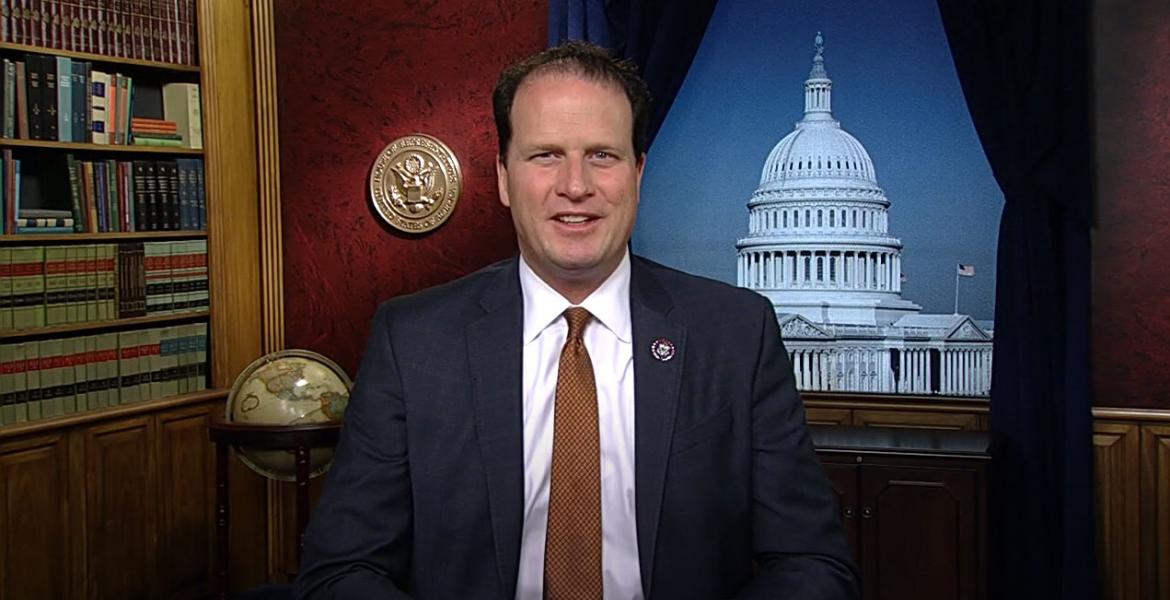This week, Rick Giardina and Rocky Craley with Raftelis Financial Consultants, along with Director of Water Utilities Bill Riley, presented and created a discussion about the Water and Water Reclamation Cost of Service and Rate Design Study with members of City Council and the general public. In the discussion, which included raising rates by 20 percent the first year and either 10 percent or 7.5 percent in the years 2017-2020 (depends on tax revenue usage), Council members and Water Utility Board members raised concerns about how such an increase would affect not only San Angelo as a whole, but also those people who struggle to pay their bills now, including the elderly.
“There are opportunities for them. There is support out there,” Giardina said.
Johnny Silvas, Single-Member District 3, said he has not heard of these resources, so he had concerns about the proposed rates and how they would affect the people living on a fixed income.
To Giardina’s credit, San Angelo and Tom Green County do have resources for low-income and the elderly. Unfortunately, these resources are busting at the seams with existing clients and strapped for cash, and an increase in water rates would create more burden for the main agencies that provide assistance to those people in need since the Water Utilities Department doesn’t offer a fixed-payment program for low-income or the elderly living on a fixed income, a benefit many utility providers in Texas offer.
The Salvation Army in San Angelo
Major Tim Grider, the minister for Salvation Army in San Angelo, said he enjoys helping the people of San Angelo, but things are getting harder because a current lack of funds.
Grider explained the assistance provided to the people in San Angelo comes from donations, and because needs have increased while donations haven’t, the organization has to focus more on just providing shelter when before it also helped with electricity and gas.
“In three years, we have gone from 20,000 to 60,000, and now to 70,000 people served,” Grider said. “The need for assistance has increased, but support has not.”
When the organization does have the funds, Grider said water is rarely a part of the equation because rent, electricity and gas take precedence. He stated there are some agencies including Christians in Action, the Homeless Coalition and Catholic Outreach that can help with water, but it does not take priority.
“There is a very very small amount designed for water assistance,” Grider added.
The minister, who has lived and served San Angelo for two years, is from Charleston, South Carolina, and said in his many years of experience, organizations in the areas he has lived, including the Salvation Army, tend to focus as well on rent, shelter, electric and gas. That hasn't changed today.
“If they have funds for water, it’s a nominal amount,” he said.
Prior to moving to San Angelo, Grider also spent nine years in Lubbock, which has three times the population. What surprised him about the change is the number of people seeking assistance in San Angelo. That number equals Lubbock’s.
“What does that say when you have more or the same amount of numbers than a city with a population of 300,000?” the minister asked.
The reason the numbers have increased relates to the population growth and the oil boom and bust that occurred recently. Many people have moved here either looking for work and not finding it, or they worked in the oil field and found themselves laid off within the past several months after oil field companies across the U.S., and San Angelo, laid off thousands of people because of low oil prices.
“West Texas is really feeling the population growth and the things that come with that,” Grider noted.
Grider also mentioned that if a water rate increase does occur, his organization, along with the others in the community, will feel the effects; something they can’t handle now because of the increasing population.
First United Methodist Church
The First United Methodist Church in San Angelo runs the Methodist Assistance Program, a donation project. A representative from the church, who has helped with the program for over 10 years and wished not to be named in this story, said the program does help those people in need with water bill assistance, but they need a referral from Christians in Action or Catholic Outreach. Additionally, they only provide assistance to a person once every six months, regardless of the type (rent, water, electricity, etc.), and they place a set amount for assistance at $50.
“Sometimes, if we’re low on funds, we give $25,” the church representative said.
The representative also said that because the church works on a referral basis, it doesn’t deal with the same issues the Salvation Army does. However, she did say the amount of need has increased, but she can’t determine issues with donations.
“I don’t know that I can say [the amount] of donations have changed as a whole, but it seems steady,” the representative noted.
Nevertheless, she agreed that if the City raises the rates, low-income citizens and the elderly will feel the effects, and only time will tell whether the assistance the church does provide will steadily remain $50 or $25.
The Catholic Outreach
The Catholic Outreach of San Angelo is another primary organization that provides assistance to low-income residents. In addition to providing affordable clothing, household items and food, the organization offers emergency assistance with rent, utilities, medication, gasoline; water utility bills are included in that.
Similar to the Salvation Army and First United Methodist Church, Catholic Outreach has experienced an increase in need, and to increase water rates would only increase what the agency provides now to the many people who found themselves laid off from the oil field, said Margie, a representative with the agency who wished not to reveal her last name.
“An increase wouldn’t be good,” she said. “With a raise in rates, we’ll have more people asking for help, and we don’t have enough funds. We’re one of the few agencies that assist with water because the Concho Valley Action Agency doesn’t help with that. These people come to us and Christians in Action, and we’re both tapped out.”
In the past year, Margie said Catholic Outreach received $52,600 to assist people with rent, food, utilities and gas, but because of the increase in need, the agency hasn’t been able to assist with water utilities. As with the other agencies, rent, electric, food and gas take priority.
Because more people are coming to the Outreach for assistance, Margie said she will have to ask for $63,000 this year to manage it.
“I can only use so much money per month, and have to try to leave some for next month,” she said. For the month of August, the target amount spent each month depleted early, which can be tough for the people.
“There are other agencies that help, but they have to meet certain criteria,” Margie said. By criteria, she meant those people must be on disability.
The good news for Outreach though is donations saw a slight increase this year rather than a decrease. The organization receives a quarterly check from local Catholic churches, and received funds from San Angelo Gives, the yearly donation drive organized by the San Angelo Area Foundation. It also receives funding from the Emergency Food and Shelter Program.
A slight increase, however, will not make a difference if a city water rate hike increases the flow of people going to the Outreach for help.
Christians in Action
Director of Christians in Action Ron Landers started with the agency 11 months ago and is working hard to re-establish the organization’s reputation in the community. Landers said he’s done a lot of networking and feels he has made some positive turnaround for improvements; however, with the number of people coming in for assistance through the Benevolence Program, he now has to deal with another problem.
“Right now, we’re having to turn people away,” Landers said. “In fact, we had to end the month [of July] early because funds were spent, so that hurt us, and it hurt the people.”
Similar to the other agencies, Christians in Action has faced an increase of helping people in need, and it’s not getting any better.
“It’s real,” he said about the growing problem in San Angelo. “We normally operate on $12,000 a month [for goods and services]. We’re not making it. We can’t give out to all the people who need assistance.”
Landers also said that the organization does have some restrictions in providing assistance; it doesn't operate like "welfare" organizations. Similar to First United Methodist Church, the organization will help people once within a certain time frame, which is usually 12 months. Many area agencies function the same. If the people at Christians in Action are unable to help, however, they will refer people to other agencies.
Again, Landers referred to the oil field layoffs in the area as being a primary issue in this growing need. In the past year, the organization supplied $144,000 in goods and various services, including Benevolence. Families in need received about $12,000 in aid total. Out of those funds, $7,000 comes from area donations, and $5,000 directly from Christians in Action.
“We would love to do a lot more,” Landers stated.
Unfortunately, like the other agencies, donations are down, which means if water rates increase, Christians in Action will also carry the weight.
“You can bet it will be a negative effect, and it’s going to put some serious strain on people,” Landers explained. “We’re already on the low-end strain, and we help people on a one-time kind of need basis. We do, however, help people ongoing, so we’ll feel this 12 times more.”
Landers did say he’s willing to work out a stronger communication system with the other agencies in the community that provide support, so they can join together to combat the growing need, and what will take place when water rates increase. The increase will happen; it’s just when and by how much.
How San Angelo Water Rates Compare
As stated in a previous article, water rates, if City Council adopts the plan presented this week, or something close to it, will increase 71 percent by 2020. Giardina said these increases occur all the time, and the rates are comparable with other cities in Texas that share similar demographics. To determine the validity of his claim, a table was created to compare San Angelo’s current rate, and the discussed rate for 2016, to other cities comparable in size and how that would change. These numbers are based on 4,000 to 5,000 gallons of water and the standard 5/8” and 3/4” meter size.
Current Water Rates | Lubbock | Midland | Abilene | San Angelo 2015 | San Angelo 2016 |
Population | 239,538 | 123,933 | 120,099 | 100,000 | 100,000 |
Median Household Income | $42,584 | $71,442 | $43,059 | $42,263 |
$42,263 |
Rates | $39.55 | $48.81 | $42.60 | $31.36 | $37.63 |
Based on the information in this table, San Angelo currently maintains the lowest rate; however, if the rates change in 2016, and based on a 5,000-gallon rate, Lubbock will take San Angelo’s place with the lowest fee. Additionally, San Angelo is the only city to add a $4.64 fee for capital improvements of the water system and a $3.32 fee for water-related capital improvements.
San Angelo also ranks lower in median household income, and according to the U.S. Census Bureau, from 2009 – 2013, there were 17.6 percent of individuals living under the poverty level.
Subscribe to the LIVE! Daily
Required






Comments
Listed By: Michael Wilkins
We did everything we were told to do to save water, the city said thank you,but said the thank you was a double edged sword. The water department didn't make enough money, so they are kicking around an idea to raise rates. The same stink occurred in Fort Worth when the city was hurting for money because it had rained so much, no body was using the water. Best thing we can hope for is the water department might win the Mega lotto.
- Log in or register to post comments
PermalinkListed By: Doctor Ding-bat
Oh well, at least the old mayor is living on easy street without any of these worries..... Somehow (lol) ? ? and before the ink was even dry on this wonderful trash contract he bent us over on, a very nice, shiny, brand spanking new and EXPENSIVE chainlink fence was installed all around his land.... Hmmm. And my poor old broken, crumbling, falling down old wooden fence has more wire holding it together than nails because I can't put a new one up for all the "extras" I'm getting gouged on every time I turn around......
- Log in or register to post comments
PermalinkListed By: Matt Robinson
It seems as if this GREAT mayor we have if showing true political form. How he got elected to a second term still baffles me after this whole trash fiasco.......smh!!!!!!!!!!
- Log in or register to post comments
PermalinkListed By: Chris P
San Angelo and the entire state of Texas just had an abundant year for water supply. Rates should be going down because of the supply. I know it is a temporary source but if you maintain your water conservation methods, your water should last much longer.As a matter of fact, the new aquifer is about to come online making the water source more stable. Which means an even greater supply. It sounds to me like the city council is looking to line its pockets through the fleecing of the citizens.
- Log in or register to post comments
PermalinkListed By: Anthony Wilson
While reservoirs have filled in other parts of the state, not so here in West Texas. O.H. Ivie Reservoir, San Angelo's primary water source, is at 15 percent capacity. Twin Buttes has dwindled to 11 percent. And while the Hickory Aquifer is online, it's being used only enough to keep its infrastructure in good working order. Because we are limited through a court order on how much San Angelo can draw from the aquifer, we are "banking" our unused allotment in case we should ever need to rely upon that as our sole water source.
The water rate consultants found the operational costs of San Angelo's water utility are comparable to that of other communities. But because of depressed sales due to drought and because of our rate structure, the utility can't generate enough to sustain itself, to meaningfully reinvest in infrastructure (i.e. replacing rusting water mains) or to pursue the next water supply. As one water advisory board member noted, "The days of cheap water are gone."
- Anthony Wilson, public information officer, City of San Angelo
- Log in or register to post comments
PermalinkListed By: T R
I still want to know if the city gets a water bill for all the watering they do. If the water department is free standing, then they should not supplement the city and the city should share our pain by having to re-budget. Can anyone answer if they get a bill or not?
- Log in or register to post comments
PermalinkListed By: Anthony Wilson
Yes, City departments are billed by Water Utilities for their water usage. Parks and Recreation is the City's biggest water user.
- Log in or register to post comments
PermalinkPost a comment to this article here: